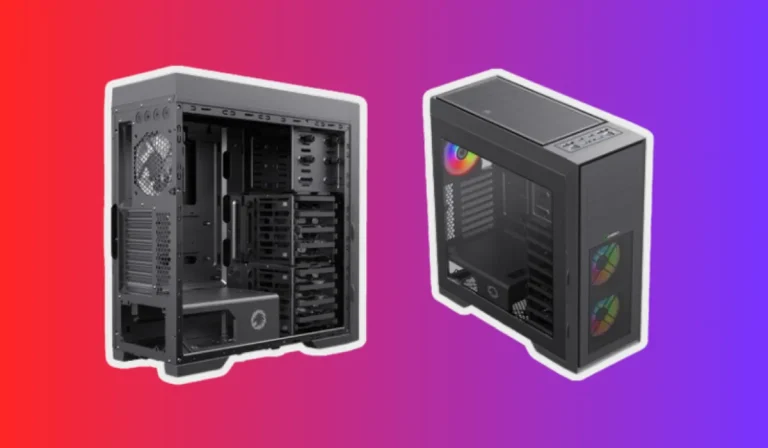How many cores are in a standard GPU?
Are you fascinated by the breathtaking graphics in video games and movies? Ever wondered how they come to life? It’s all thanks to the unsung heroes of graphics processing: GPU cores.
What Determines the Core Count in a GPU?
Chip Design and Architecture
The design and architecture of the GPU chip play a crucial role in determining the core count. Different GPU manufacturers employ various chip designs, such as NVIDIA’s CUDA cores or AMD’s Stream Processors.
Each manufacturer has its own approach to designing the chip, which impacts the number of cores it can accommodate. Higher-end GPUs often feature more complex chip designs, allowing for a greater number of cores.
Intended Use and Target Market
The intended use and target market of a GPU also influences the core count. GPUs designed for gaming enthusiasts and professionals working in graphic-intensive fields tend to have higher core counts.
These GPUs are optimized to handle complex calculations and render high-resolution graphics smoothly. On the other hand, entry-level or budget-friendly GPUs may have lower core counts as they are designed for less demanding tasks.
Manufacturing Process and Cost
The manufacturing process and cost involved in producing GPUs also impact the core count. Smaller manufacturing processes allow for more transistors to be packed onto the GPU chip, enabling a higher core count.
However, smaller manufacturing processes can be more expensive, which affects the pricing of the GPU. Manufacturers strike a balance between performance, cost, and market demand to determine the core count that aligns with their target market.
Does More Cores Always Mean Better Performance?
Diminishing Returns with Increasing Core Count
While a higher core count can improve GPU performance, there is a point of diminishing returns. Beyond a certain threshold, the performance gains from adding more cores become less significant.
This is because not all applications or games can effectively utilize a large number of cores. Some software may be optimized to make use of a specific number of cores, and additional cores may not contribute much to the overall performance.
Considerations for Specific Applications
The impact of core count on performance also varies depending on the specific application or task at hand. Certain applications, such as video editing or 3D rendering software, can benefit from a higher core count as they involve complex calculations and parallel processing.
On the other hand, many games primarily rely on single-threaded performance and may not take full advantage of a higher core count. In such cases, factors like clock speed and GPU architecture can have a more significant impact on performance.
Gaming and Professional Tasks
When it comes to gaming, the relationship between core count and performance is influenced by factors like game optimization and GPU architecture. While some games may benefit from more cores, others may prioritize clock speed or rely on other GPU features. It’s important to consider the specific requirements of the games you intend to play and strike a balance between core count and other performance factors.
GPU Cores and Gaming Performance
Parallel Processing and Graphics Rendering
GPU cores are designed for parallel processing, which allows them to handle multiple tasks simultaneously. In gaming, this parallel processing capability is crucial for rendering complex graphics in real-time.
Each core in a GPU is responsible for executing a specific set of instructions, allowing for efficient processing of game assets, textures, and effects. A higher core count can help distribute the workload more effectively, resulting in smoother gameplay and enhanced visual details.
Game Optimization and GPU Architecture
While GPU cores are important, it’s worth noting that gaming performance is not solely determined by core count. Factors such as game optimization and GPU architecture also play a significant role. Game developers optimize their titles to run efficiently on a range of hardware configurations, including different core counts.
Some games may be more reliant on clock speed, memory bandwidth, or other GPU features, rather than simply relying on a higher core count. Additionally, the architecture of the GPU, such as the efficiency of the core design, can impact gaming performance.
Balancing Cores, Clock Speed, and Memory
In gaming, it’s crucial to strike a balance between GPU core count, clock speed, and memory. While more cores can improve performance, it’s important to consider other factors as well. A GPU with a higher core count but lower clock speed may not deliver the same level of performance as a GPU with fewer cores but a higher clock speed. Similarly, having sufficient memory bandwidth and capacity is important for storing and accessing game assets, textures, and frame buffers.
FAQ’s
1. How many cores does a standard GPU typically have?
A standard GPU can have anywhere from a few hundred to several thousand cores, depending on the specific model and architecture. The number of cores can vary significantly, so it’s essential to research and compare different GPUs to find the one that meets your specific needs.
2. Is a higher core count always better for GPU performance?
Not necessarily. While more cores can potentially enhance performance, other factors such as clock speed, memory bandwidth, and architecture also play crucial roles. A higher core count alone doesn’t guarantee better performance, so it’s important to consider the overall design and capabilities of the GPU.
3. Can all applications take advantage of a large number of GPU cores?
No, not all applications can effectively utilize a large number of GPU cores.
4. How does the core count of a GPU impact gaming performance?
The core count of a GPU is one of the factors that can impact gaming performance, but it’s not the sole determinant. Game optimization, clock speed, memory capacity, and GPU architecture also contribute to overall performance. It’s crucial to consider the overall package and balance of these factors for optimal gaming experience.
5. Are more GPU cores always better for tasks like graphic design or video editing?
Not necessarily. While graphic design and video editing tasks can benefit from a higher core count, it’s not the only factor to consider.
Conclusion
when it comes to GPU cores, understanding their significance and impact on performance is crucial for choosing the right GPU for your specific needs. While more cores can enhance performance, it’s important to consider factors such as game optimization, GPU architecture, clock speed, and memory capacity.




